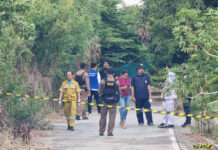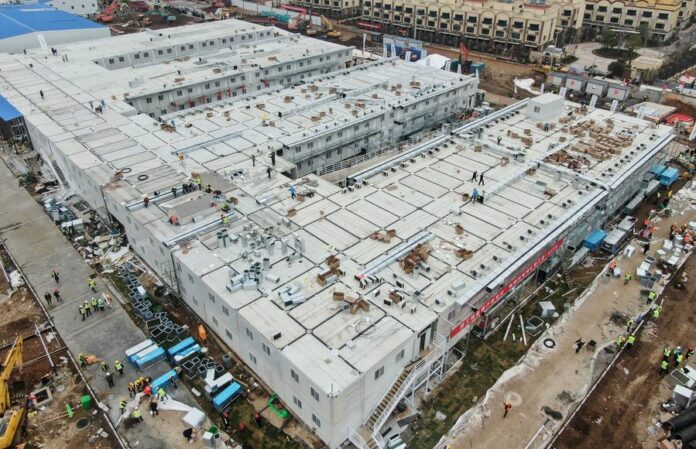
WUHAN (Xinhua) — China has built a makeshift hospital in 10 days to battle against the novel strain of coronavirus in Wuhan, the epicenter of the virus outbreak in central China’s Hubei Province.
Huoshenshan (Fire God Mountain) Hospital was delivered Sunday in Wuhan. It is dedicated to treating patients infected with the virus.
A total of 1,400 medical staff from the armed forces are tasked with treating patients in Huoshenshan Hospital starting from Monday. The medics consist of 950 people from hospitals affiliated to the People’s Liberation Army (PLA) Joint Logistic Support Force, and 450 from medical universities of the army, navy and air force of the PLA who were sent to Wuhan earlier.
Replicating Beijing’s SARS treatment model in 2003, Wuhan started building two makeshift hospitals: Leishenshan (Thunder God Mountain) and Huoshenshan. On Jan. 23, workers broke ground on Huoshenshan Hospital, with a capacity of 1,000 beds.
“Mission Impossible” Made Possible
Chinese health authorities Sunday said it received reports of 2,590 new confirmed cases of novel coronavirus infection and 45 deaths on Saturday from 31 provincial-level regions and the Xinjiang Production and Construction Corps. All the deaths are in Hubei Province, according to China’s National Health Commission.
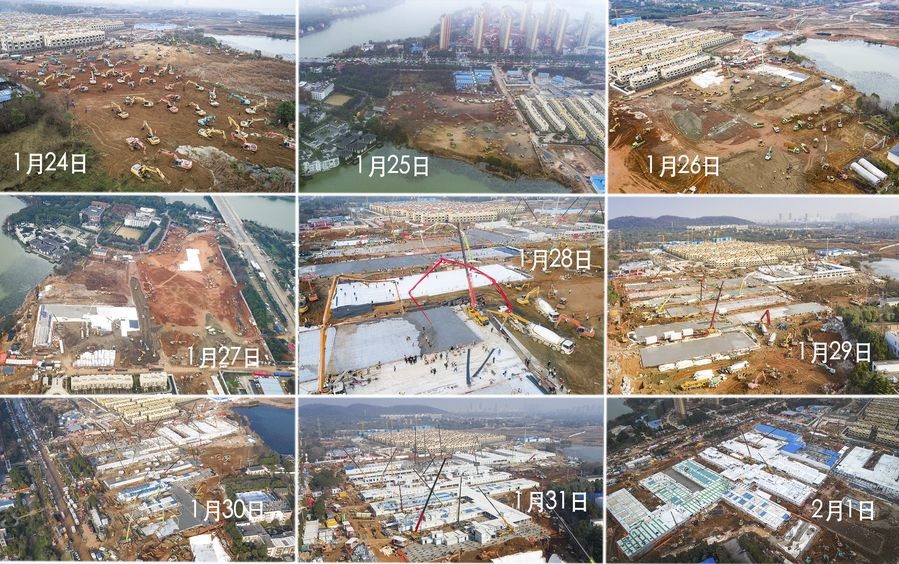
As China feels the pinch of the outbreak, authorities have decided to replicate Xiaotangshan Hospital, a temporary medical center in the northern suburb of Beijing built in 2003. Beijing built Xiaotangshan Hospital in just a week in the treatment and control of SARS, or Severe Acute Respiratory Syndrome.
When Fang Xiang knew he and his team had to finish the hospital in Wuhan in 10 days, he thought it was “mission impossible.”
“For a project of this scale, it usually takes at least two years,” said Fang, project manager of the Third Construction Co. Ltd of China Construction Third Engineering Bureau. “It takes at least a month to construct a temporary building, not to mention a new hospital for infectious diseases.”
In addition, with a big number of migrant workers partaking, it is difficult to provide adequate food and shelter on-site, according to a staff member of Wuhan Urban and Rural Construction Bureau.
But the “mission impossible” had to be implemented under severe circumstances.
From Jan. 23 to Feb. 1, Wuhan’s confirmed cases of infection rose from 495 to a staggering 4,109. This has put huge pressure on local medical facilities, which failed to supply enough beds. A good many patients had to stay home for quarantine and treatment. If not handled properly, the epidemic could exacerbate.

Located in a sanatorium near Zhiyin Lake in southwestern Wuhan, the hospital is far away from downtown areas where people converge. The area has sufficient transportation and pipeline systems, and existing dining halls and dormitories are ready to provide services.
Authorities spent five hours on the designing plan and created a designing draft within 24 hours. Three companies received an order to build the “Fire God Mountain” under the Third Construction Co., Ltd. of China Construction Third Engineering Bureau.
“I have never participated in such an urgent task, and I have never seen so many companies involved in a single project,” said Fang Xiang’s colleague Shen Kai. “It is a tough job, but we need to give it our best shot.”
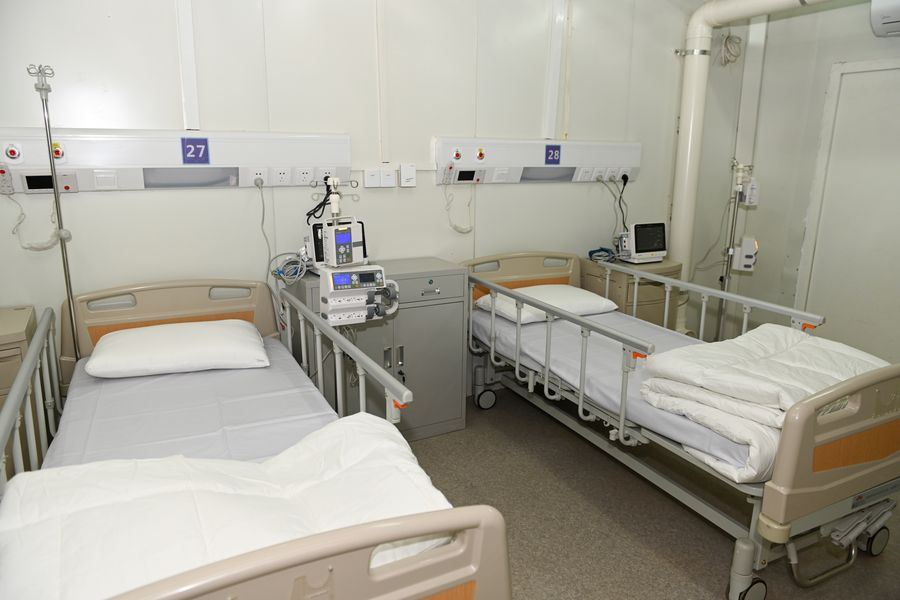
Thousands of workers were operating more than 800 equipment simultaneously as they rushed against time to save lives. They vowed to fight against the virus and worked in shifts to complete the construction. Some people only slept for four hours a day, Shen said.
Ma Jiaqiang, 47, volunteered for the project when he read about the recruitment ad for Huoshenshan Hospital on social media.
“I have been working in Wuhan. It is my home,” Ma said. “I just had to take part.”
Ma operated a digging machine for eight hours a day at the construction site.
“I feel honored to be able to part of this,” Ma said.
Cheer up China!
After the hospital work began, the Chinese public went out of their way to supervise the construction of Huoshenshan.
China’s state broadcaster has been live-streaming the around-the-clock construction progress, which instantly went viral online. With no narration or background music, the livestream videos provide audiences a real-time bird’s-eye view of the construction site.
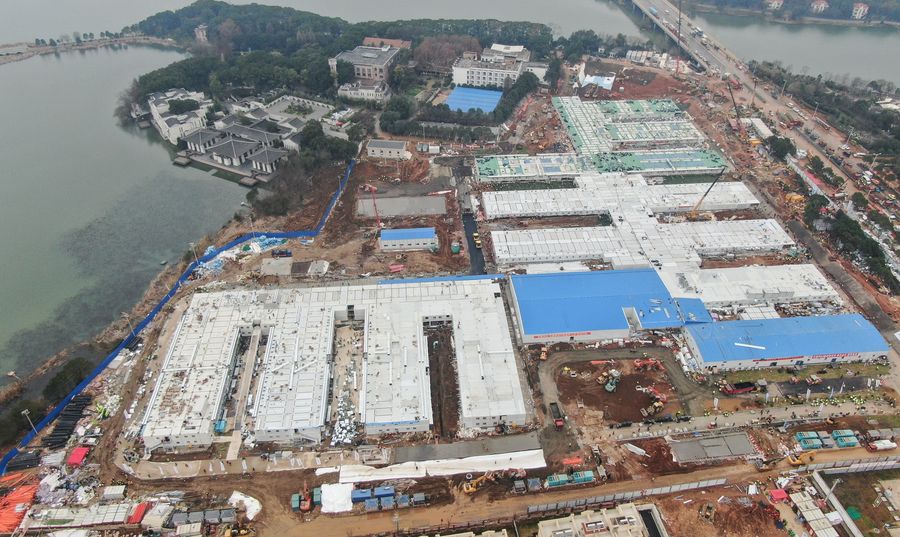
Calling themselves “online supervisors,” Chinese citizens have been keeping a close eye on the projects and exchanging their ideas and feelings in the comment section. They cheered when the hospital was delivered.
“Cheer up, China! I believe we can curb the epidemic,” read a typical online comment.
“Salute to the workers working around the clock,” read another comment.
The project is bringing hope to patients like Zhang Yue, a Wuhan resident, who has been suffering from fever for days.
“It feels like seeing the sunlight shining through the dark clouds,” Zhang said.
(Reporting by Zhong Qun, Li Jinfeng, Jia Qilong, Li Yun, Wang Zuokui, Cheng Lu, Cheng Min, Xiao Yijiu, Li He and Chen Yehua; Video reporters: Yu Guoqing, Xu Yang, Rao Rao, Jia Qilong and Pan Zhiwei; Video editor: Liu Yuting.)













